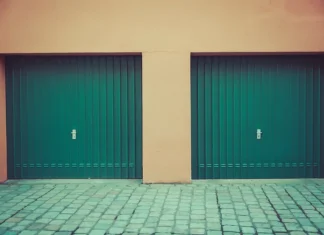Many things can go wrong when you start moving to your new home. With all the moving parts and small details to consider, different people will have specific concerns or needs, like safely moving valuable items and how to pack kitchenware properly.
In most cases, you have to hire professional moving companies to help you out. They won’t only address your moving concerns but also lend you a hand when it comes to packing. If you’re unsure about anything related to relocating, you can learn more about what you should and shouldn’t do by working with professionals.
To make packing as efficient and hassle-free as possible when moving to a new home, try some of the tips below.
10 Packing Tips for Moving to a New House
1. Make A Plan
Before you start packing your things, it’s always wise to make a plan. Doing so will let you create an inventory and determine which items you’d like to bring with you and which ones you’d rather give away or sell. Having a plan before getting started can also help you alleviate the pressure of packing your items and make the process more organized.
2. Do Not Pack Too Much
Whether or not you’re moving permanently, keep in mind that you don’t have to pack everything. After all, you can purchase things such as household goods, entertainment devices, furniture, and even smart devices to upgrade your new home.
Bulky items will only take up precious packing space and consume more time. Besides, it’s best to be practical and ruthless when packing. So prioritize what’s more valuable and get rid of unnecessary items.
3. Use The Right Size Of Boxes
When packing items such as books, make sure to pack them together with other heavy objects in small boxes. On the contrary, light items like pillows and linens can be placed in bigger boxes. This is because huge boxes with heavy items is a common complaint of movers. Those boxes aren’t only difficult to haul but also more likely to break or get damaged due to the weight of the items inside.
4. Pack Your Essentials In A Bag
When you move into your new house, it’s unlikely that you’re going to unpack clothes, go grocery shopping, and do laundry right away. That’s understandable considering that moving may take a lot out of your entire family.
If you have essentials such as basic toiletries and some clothes in a bag, you can survive the moving day itself and even the next couple of days in your new home without having to unpack everything.
5. Start With Your Least Used Items
Start packing your items a few weeks before your move date. You might not want to start with your most used items, favorite coffee mug, and shower products since doing so might require you to dig through packed boxes later on to retrieve those everyday necessities. Instead, start packing your least-used items, such as valuable pieces of décor or artwork.
Check your attic, basement, garage, and other storage areas to look for and pack items that are still useful to you and your family. If possible, designate a space in your current home where you can keep your first group of boxes to make room for navigation once you start packing the necessary items.

6. Be Extra Careful With Artwork And Framed Photos
Packing any kind of artwork is different from packing other belongings. For instance, you must never wrap oil paintings with regular paper because the material might stick to the surface. Be sure to understand how to pack such items properly to keep them intact and damage-free.
When packing framed photos, use painter’s tape to make an X symbol on the glass. This would help strengthen them and prevent them from breaking during transport. After that, wrap your picture frames in bubble wrap or paper and place them in a frame box with cardboard between every framed piece for protection.
7. Protect Fragile Items
Fragile knickknacks and awkwardly shaped items can make packing more complicated. Fortunately, some things can make this process much easier, including the following:
- Bubble Wrap – Commonly used to secure fragile items, this air-filled material is also made to absorb sudden shocks during transit.
- Biodegradable Packing Peanuts – These are versatile packing materials that allow you to pack small items safely into big boxes. They fill up the extra space in the boxes, keeping any fragile item well protected.
- Packing Paper – This is an economical way to keep your fragile items secure and safe in their boxes. For smaller items, use colored paper to avoid throwing them out by accident.
Any of these packing materials can keep your fragile items safe during the move. Depending on your needs or budget, choose the one that’ll benefit you most.
8. Get Your Wardrobe In Order
When it comes to packing clothes for moving, there are several options to consider. You can pack folded clothes in a cardboard box or a suitcase, or you can leave them in your dresser if you plan to bring the furniture. You can consider using special wardrobe boxes so you can properly hang clothes that shouldn’t be folded.
For shoes, be sure to wrap them individually to keep buckles or sharp heels from damaging your other shoes. Doing this can also prevent any dirt from spreading and messing up many of your shoes.
9. Proper Labeling Is Necessary
To stay organized throughout the packing process, use various colored masking tape or multicolored packing labels. Label every box properly to save more time and make things more convenient for everyone, particularly during moving day. If every box comes with a label, your movers can quickly determine which ones require proper handling to avoid damage, making moving faster and easier.
Labels also make unpacking a breeze. So if you don’t want to play a guessing game when you move to your new home, don’t forget to label all your boxes.
10. Tape Or Seal Your Boxes Well
Use tape to close the top and bottom seams of your boxes. Then, don’t forget to cover the top and bottom edges with more tape. The reason behind this is that those areas are where stress is often concentrated, so it’s a must to reinforce them.
Conclusion
It certainly won’t be that easy to pack your belongings when you need to move. But by keeping the packing checklist for moving and tricks above in mind, you can be sure that everything will be more organized and go according to your plan. Just see to it that you use the right packing materials that are of good quality and never hesitate to ask for help from professional movers.












